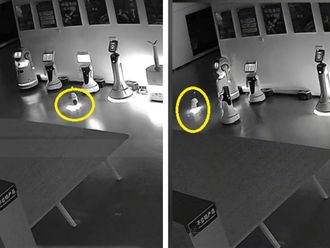Kiev: A seasonal recovery in agriculture should ease the contraction of Ukraine’s war-torn economy to 10 per cent year-on-year in the second quarter from 13 per cent in the first quarter, a Reuters survey showed.
Fourteen banks and brokerages polled by Reuters said this year’s relatively good grain harvest, expected to reach 50.5 million tonnes, would keep 2015’s gross domestic product from shrinking more than 7.0 per cent.
“Positive performance in the agrarian sector will become a supportive factor for Ukraine’s economy in the second quarter and beyond”, said analyst Olga Shubina of Credit-Rating.
However, the gains will not be enough to offset a 12.0 per cent contraction of Ukraine’s industrial production, which has been damaged by fighting in eastern Ukraine. Consequently, the government forecasts the economy will shrink by 5.5 per cent in 2015 compared with a 6.8 per cent fall in 2014.
“Although positive performance in some sectors is possible, GDP will remain negative in all quarters”, said Oleksander Zholud of the International Centre for Policy Studies.
About 70 per cent of Ukraine’s territory is used for farming, and the country is one of the world’s top five grain exporters.
It produces enough food for its population of 43 million.
Agriculture’s contribution to the economy rises from April to October, months of peak activity on Ukraine’s farms. Its percentage of GDP rises to 5 per cent in the second quarter and to 18 per cent in the third from less than 1 per cent in the first quarter. Industry’s share remains largely stable at 20 to 21 per cent throughout the year.
In 2014, despite a 2.8 per cent expansion in agriculture, Ukraine’s GDP shrank 6.8 per cent as industrial output contracted 10.1 per cent because of the conflict between Kiev and pro-Russian separatists in eastern Ukraine. Since it began last April, the fighting has destroyed about 20 per cent of Ukraine’s industrial capacity and killed more than 6,000 people.
Since February, Kiev and the separatists have struggled to maintain a fragile ceasefire accord, but new casualties are reported almost daily.
“The Ukrainian economy continues to suffer from the direct and indirect effects of hostilities. The final resolution of the conflict remains uncertain”, said Olena Bilan of Dragon Capital.
The conflict between Ukraine’s army and the pro-Russian separatists has directly affected less than 10 per cent of the country’s territory, but the government has failed to encourage the creation of new businesses and jobs in other regions. The number of people in the workforce decreased to 19.9 million in 2014 from 20.8 million in 2013.
Even far from the front lines, many businesses are struggling from high taxation, a weakening currency and rocketing inflation. The hryvnia has lost 30 per cent of its value against the dollar since the start of the year, after a 50 per cent decline last year.
Ukraine’s average monthly wage shrank to 150 dollars in February 2015 from 320 dollars in the same month last year. This hit people’s purchasing power and, according to the State Statistics Service data, the volume of retail trade fell by 11.2 per cent year-on-year in January-February 2015.
Reuters polled analysts at Alfa Bank (Ukraine), CASE (Ukraine), Dragon Capital, Concorde Capital, Credit Rating, Da Vinci AG, Capital Times, International Centre for Policy Studies, Prominvestbank, Institute for Economic Research and Political Consulting, Raiffeisen Bank Aval, Credit Agricole Bank Ukraine, First Ukrainian International Bank, Investcapital Ukraine.












